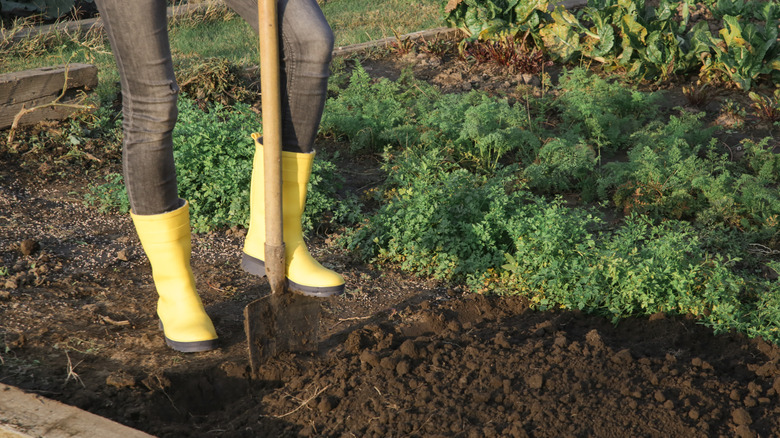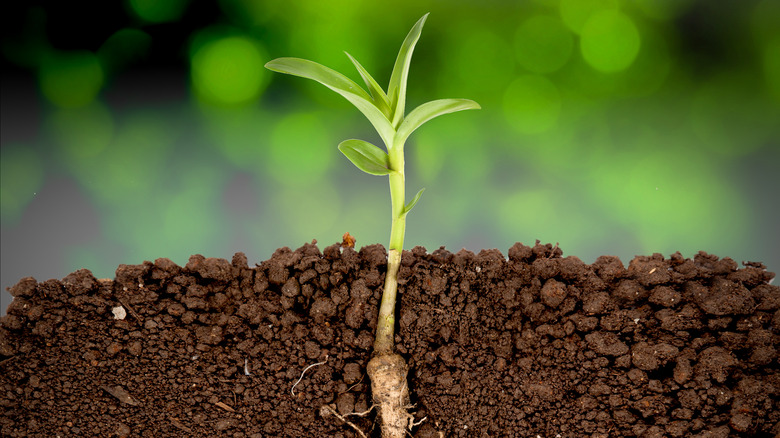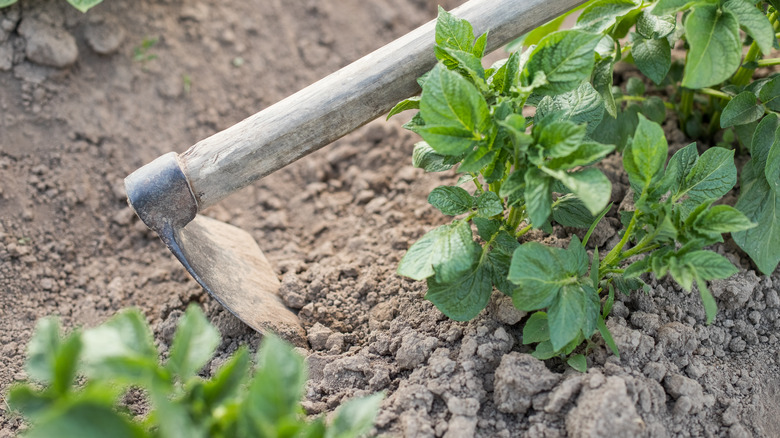You Might Be Able To Skip Turning Your Soil This Spring
If you've been struggling with weeds for years, put down the shovel and save your back some trouble. As the weather slowly but surely warms up, many gardeners are feeling antsy and ready to get to work. Raking up leaves, fertilizing fruit trees, and turning the soil are some of the biggest tasks on everyone's spring to-do lists. Turning the soil is usually a great idea to break up dense dirt clods, mix in compost, improve water drainage, and help roots receive oxygen. However, some may want to reconsider before gathering up their garden tiller and trowel.
Turning your soil now could lead to hours of pulling weeds in a few months when the weather isn't nearly as cool and pleasant. If you're wondering how this could be, keep in mind that when you turn the soil in your garden, you may be rousing weeds from their deep underground slumber. Once above ground, they have everything they need to grow and proliferate, making your task of maintaining a beautiful landscape that much trickier.
Don't wake the weeds
Annual weeds like chickweed, fat hen, groundsel, and shepherd's purse can release tens of thousands of seeds every year. For some species, these far-spreading seeds can lie dormant in the soil for years and even decades, just waiting for their moment in the sun — literally. When you go to turn your soil, you could be dragging them up to the surface where they'll receive sunlight, water, and fresh air. Unfortunately, that covers everything a nasty little weed needs for seed germination.
If you struggle with perennial weeds in your landscape, you're not immune to this problem either. Perennials like dandelions, bindweed, and burdock can have very deep roots, sometimes reaching down 13 feet or more. Like seeds, perennials' roots can appear dormant when necessary to survive droughts and freezes and hide from a gardener's picky hands. Turning up the soil may awaken these sleeping monsters too, and breaking up their roots can even encourage them to shoot out more side buds, quickly multiplying your weed problem.
Scrape softly and carry a big hoe
What's a forlorn gardener to do with all their compact soil this spring? While turning your soil can cause more harm than good, it's okay to lightly scrape the top inch or so. Use a long-handled hoe to spare your back and avoid applying too much pressure. As weed seeds appear on the surface of your garden, you can lightly hoe them away and pluck any baby sprouts. Diligence is key here; try to scrape a few times a week if you can. Because the seeds won't have time to burrow into the soil, the hot sun should help to dry them out and kill them.
As for deep-rooted perennial weeds, it's best to avoid scraping off the tops. Grab a trowel and carve out as much of the root structure as you can from visible plants, but be careful not to disturb the soil of the whole garden bed. As previously mentioned, turning up the soil will only inspire perennial weeds to become more aggressive. After scraping off seeds and cutting out weeds, consider laying mulch or straw around your garden bed. This will help to fill up that empty space between plants and make it harder for perennial weeds to burst through. Annual seeds will also have a much harder time landing on your soil if they have to get through mulch and straw first.


